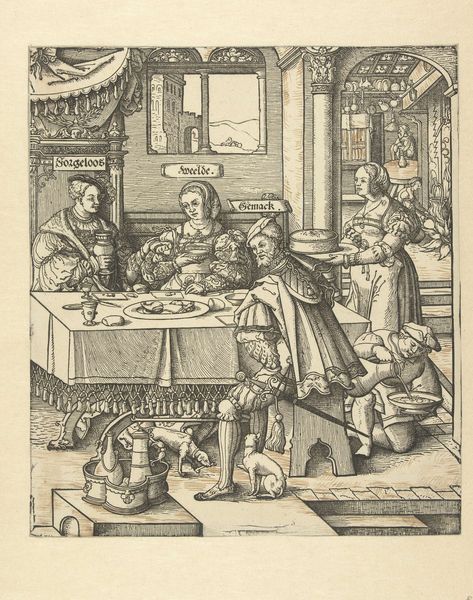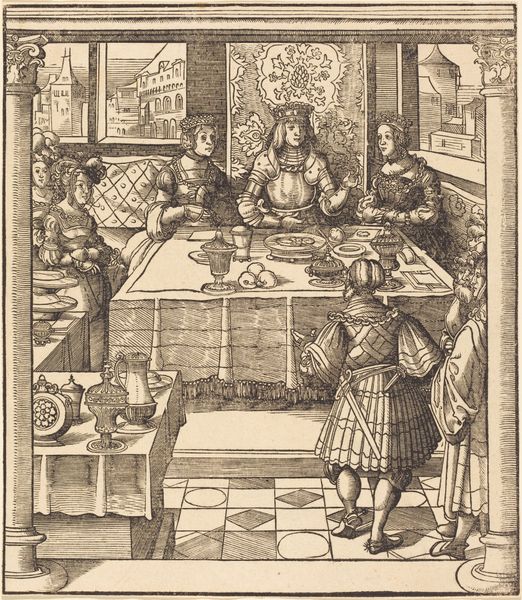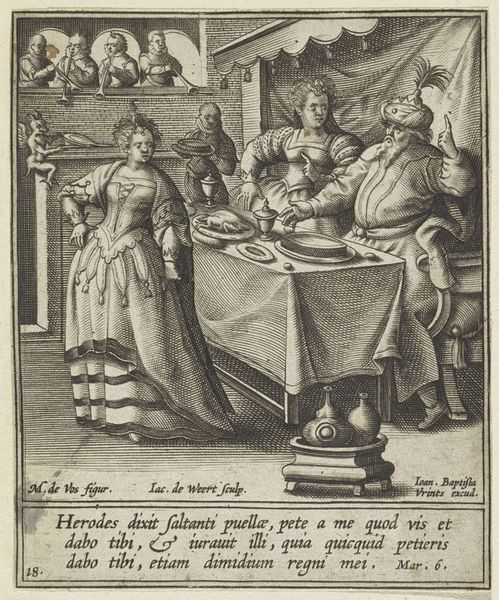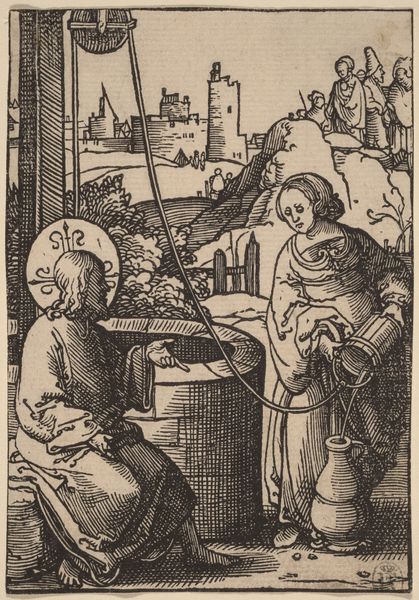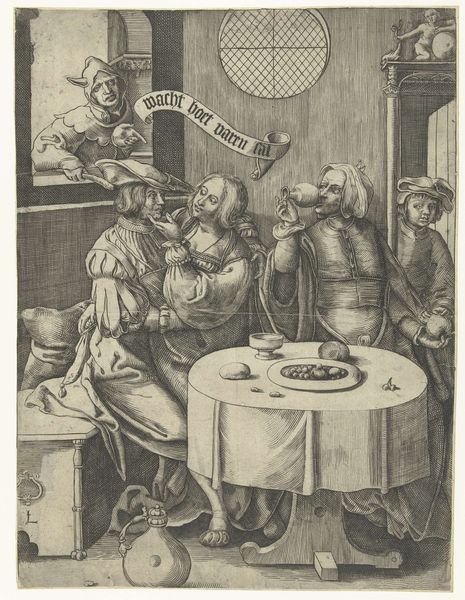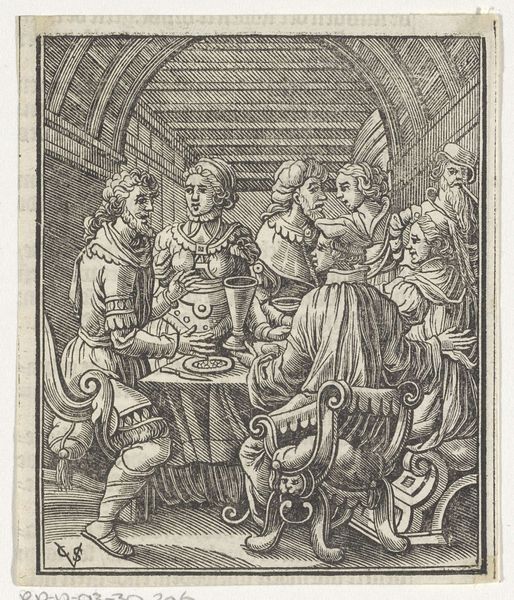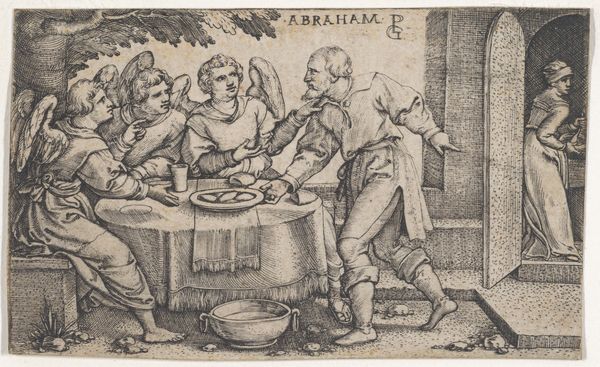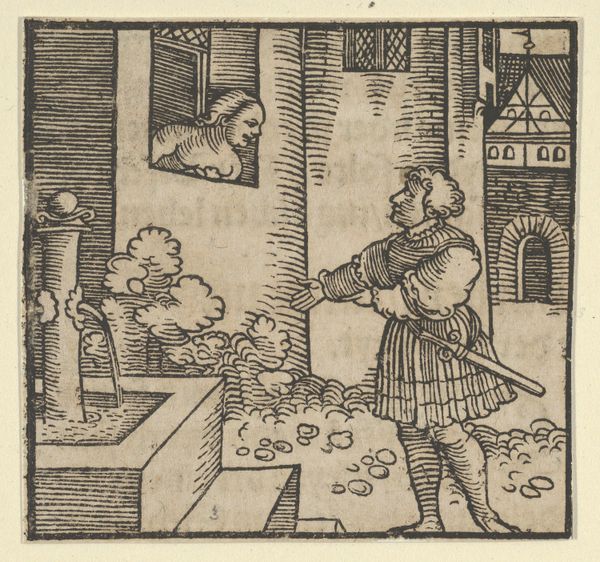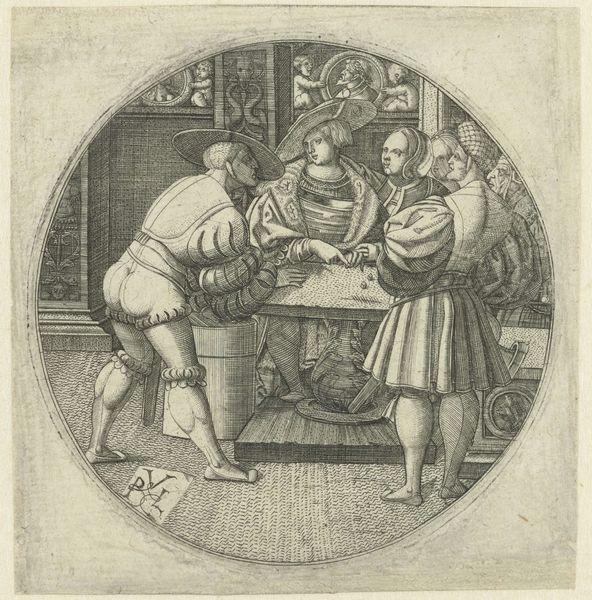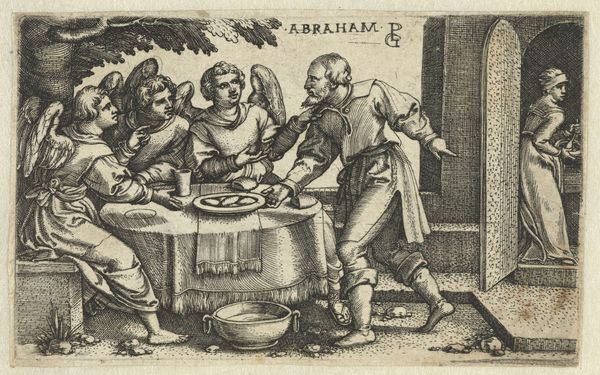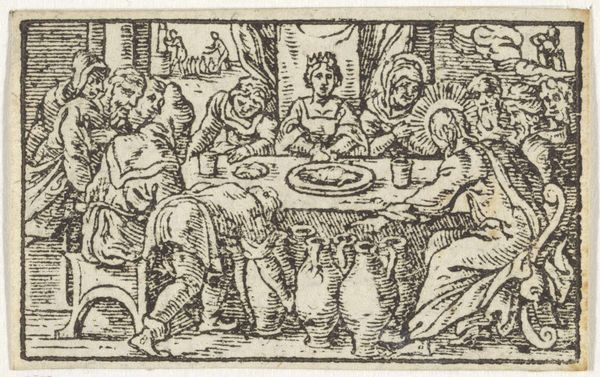
drawing, print, engraving
#
drawing
#
allegory
# print
#
death
#
11_renaissance
#
vanitas
#
history-painting
#
engraving
Dimensions: Sheet: 2 15/16 × 2 3/16 in. (7.4 × 5.5 cm)
Copyright: Public Domain
Editor: Here we have Wenceslaus Hollar's "The Miser, from the Dance of Death," dating from between 1651 and 1800. It's a drawing and engraving, and it feels… chaotic. All these coins and boxes, plus the figures reaching for… something. How do you interpret this work? Curator: The most arresting symbol for me is the skeleton presenting the bowl of coins. Consider the figure of death offering the miser precisely what he desires. Is it a reward or a cruel mockery? Editor: I hadn't thought of it that way. It felt more like Death was taking the coins away. So, is it an allegory? Curator: Exactly. This image belongs to a genre called “memento mori,” reminders of mortality. Can you see how the setting amplifies this message? Editor: You mean the barred window and stone walls? It feels like a prison. Curator: A prison of the miser's own making! Think about the meaning of his possessions, or rather his obsession with them. How do the piles of coins on the table change our view of the man? Editor: They make him seem… smaller, somehow. Less in control. All that he values is suddenly meaningless in the face of Death. Curator: Precisely. Hollar encapsulates the futility of earthly possessions, highlighting how material wealth provides no defense against our mortality. And consider the inscription at the bottom... Editor: It really gives you a lot to think about. I hadn’t really focused on the themes of vanity or the “Dance of Death” before. Thanks! Curator: My pleasure. Reflecting on these symbols is a constant source of revelation.
Comments
No comments
Be the first to comment and join the conversation on the ultimate creative platform.
